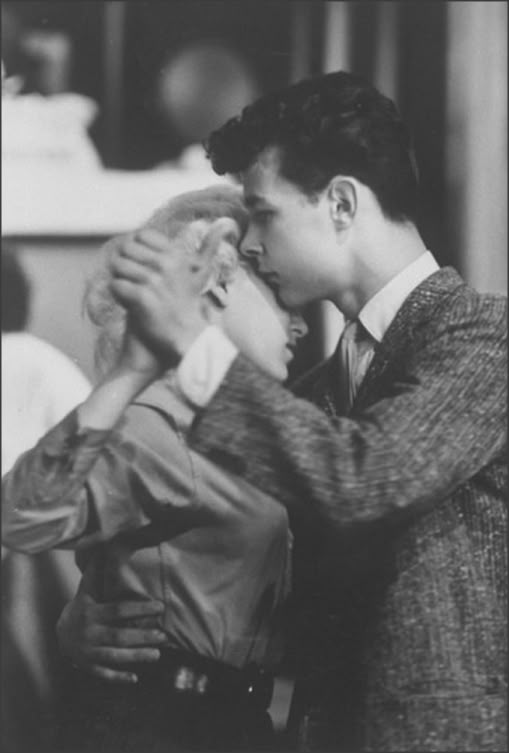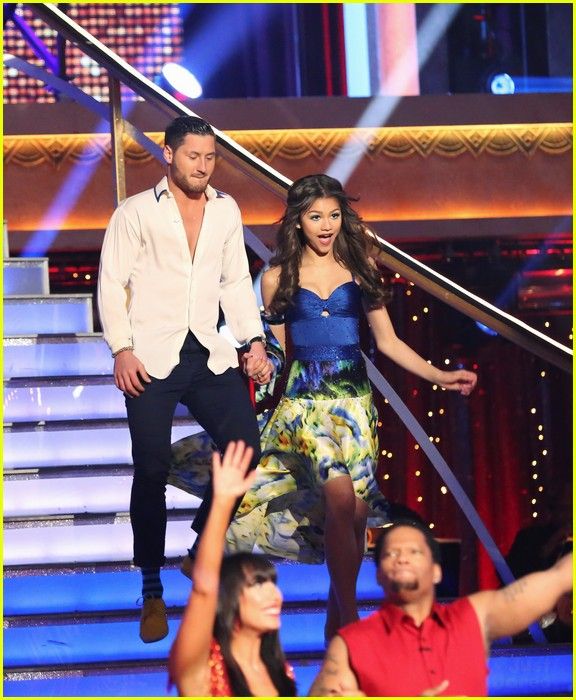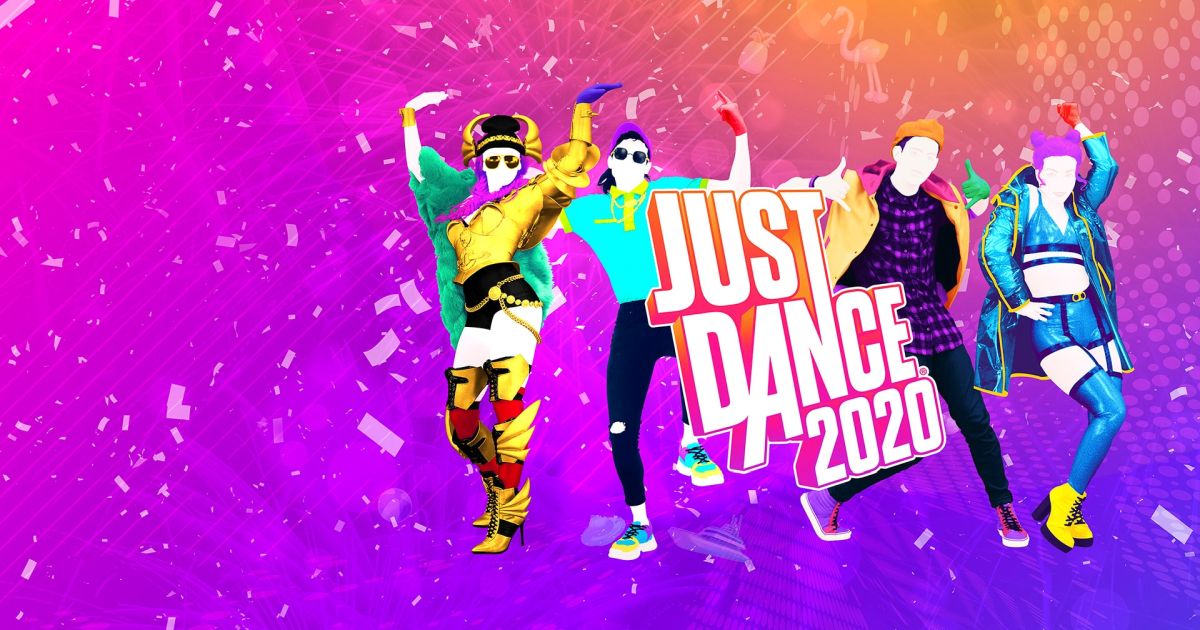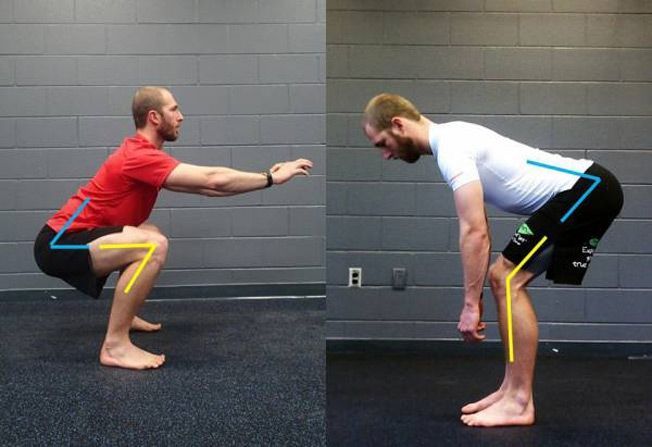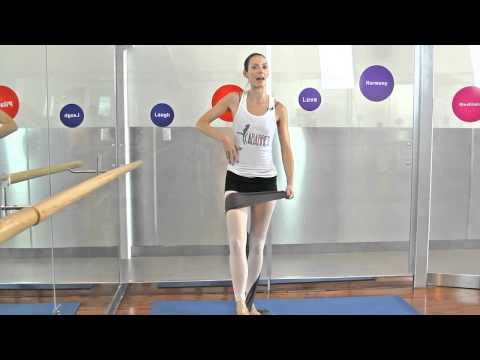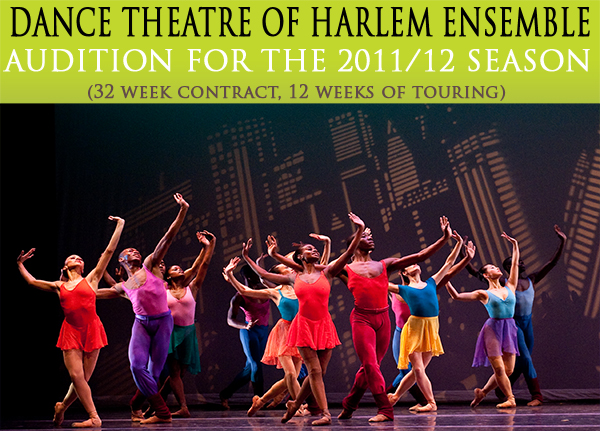How to slow dance for guys
5 Simple Steps to Master the Slow Dance for Beginners
There are many occasions to slow dance such as weddings, proms, and just wherever there is a music of a slow tempo. But, maybe you are intimidated by a slow dance. You don’t know where to put your hands, or don’t know how close to stand to the other person. What steps do you do in the slow dance? We’re not talking about a specific dance step like the Foxtrot; we are just talking about the slow dance in general. Are you a beginner-level dancer and looking for easy dance moves? In this article, we will give you five simple steps to master the slow dance so you’ll never again be fearful of being out on the dance floor when the music slows down.
Slow Dancing Arms
There are two options for your arms when you slow dance.
Option 1- Slow Dancing Arms
In this option, you can think of slow dancing as an extended hug as you and your partner sway back and forth. The female places her arms on the guy’s shoulders or hangs them loosely around his neck. The guy puts his hands on the female’s hips or wraps them loosely around her lower back. Leave enough room between you so that you both feel comfortable.
As for head placement, this depends on you and your partner’s height. If you are a couple and are dancing closely, you can rest your head on your date’s chest or over his/her shoulder. Or, you can look at each other.
It’s important to stay relaxed. Try to control your breathing by inhaling and exhaling steadily to maintain an even heart rate.
Option 2 – Slow Dancing Arms
Holding your partner’s hand is the more traditional way to sway in a slow dance. If you aren’t dating or don’t know each other well, this position can be more comfortable. The guy puts his right hand on the females’ hips or on her mid- or upper-back. If you’re dating and close, the guy can wrap his arm loosely around her waist. Then, he uses the left hand to take her hand or lace his fingers into hers. The female should put her left hand on her partner’s shoulder and hold his hand with her right hand.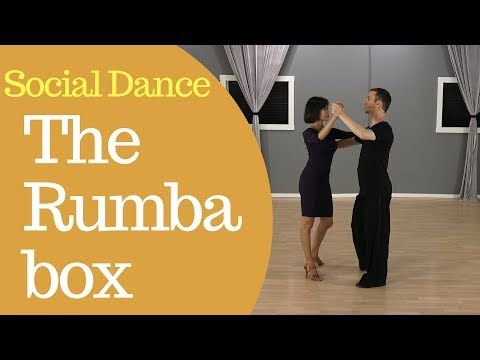 With this stance, your heads will probably stay forward, so you are looking at each other. Be sure to smile at your dance partner and maybe start a conversation to help relax.
With this stance, your heads will probably stay forward, so you are looking at each other. Be sure to smile at your dance partner and maybe start a conversation to help relax.
Slow Dancing Feet
It’s good to be cautious of where you put your feet when slow dancing so as not to step on each other’s toes. When you first join together to dance, look down at where you and your partner’s feet fall. This gives you a general idea of how far over you can move your feet without stepping on his/her toes.
If you are close together in the slow dance, you can put one foot between your partner’s feet and your other foot on the outside. If there is more space between the partners, you can put your toes in front of your date’s toes and about an inch off to the side. Don’t get too technical on this aspect. When your bodies come together to dance, your feet should naturally fall in place.
Leading
It’s traditional for the guy to lead a slow dance. If this is just way too traditional for your taste, then the female can change it up and lead.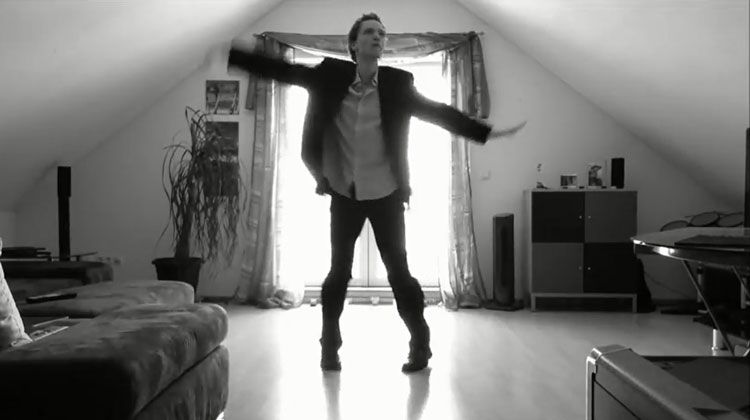 But, someone has to lead. To lead, gently push your partner’s hand in the way you want to go as you also move your body in that direction. Follow the music and move to the beat. To follow, just follow your partner’s moves.
But, someone has to lead. To lead, gently push your partner’s hand in the way you want to go as you also move your body in that direction. Follow the music and move to the beat. To follow, just follow your partner’s moves.
Swaying
The basic slow dance doesn’t require much footwork at all, so it is an easy dance for beginners. You can keep your feet planted in one place, make sure your knees are loose, and then gently sway back and forth using your hips and knees. If you are confident with this, you can gently lift your feet off the floor just a bit. These small lifts can turn you in a slow circle. Remember to keep your arms and elbows loose. This will make it easier to breathe and sway comfortably.
The Twirl
If you are leading and are feeling confident and a bit adventurous while you’re slow dancing, you can invite your partner to twirl. This is a common move so your dance partner will probably know what to expect. Take a step back from your embrace and hold your partner’s left arm up in the air with your right arm.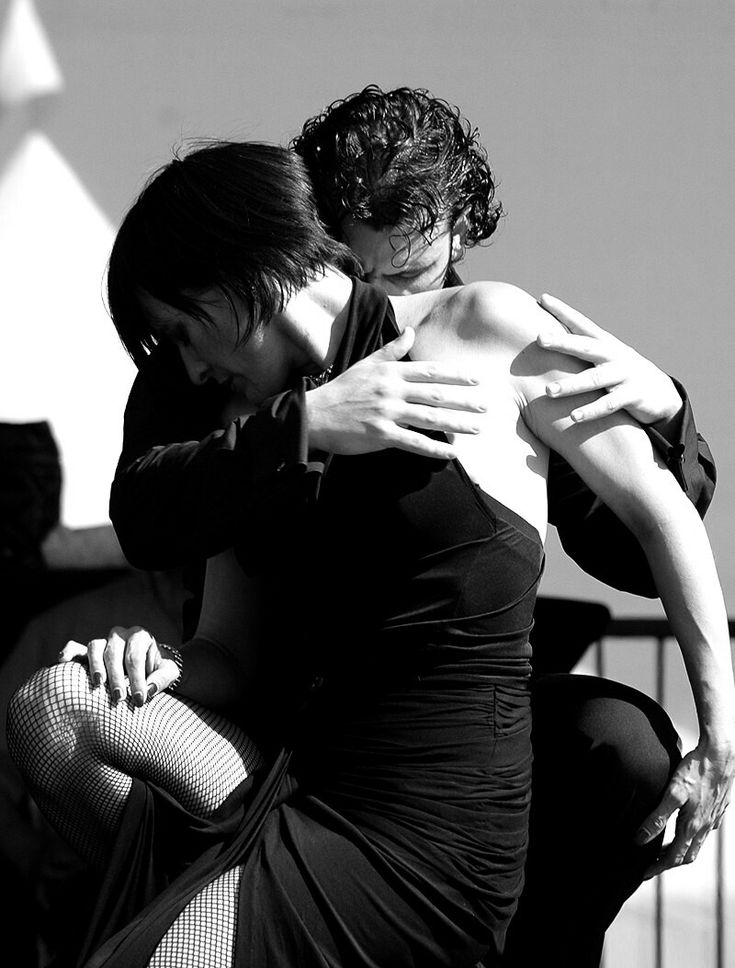 After guiding her in turning 360 degrees, you simply return to your starting position and resume swaying.
After guiding her in turning 360 degrees, you simply return to your starting position and resume swaying.
Get Started Learning How to Slow Dance at Fred Astaire in Raleigh
Are you ready to get started learning to slow dance and other kinds of dancing? You can begin today learning these easy dance moves and enjoy the many benefits of dancing! For information on our dance classes and dance lessons, call us at (919) 872-0111 or fill out our online contact form below!
Contact Us Today
No Partner Necessary
How to Slow Dance | The Dancer’s Guide for 2023
Knowing how to slow dance at a wedding, holiday party, prom and other social events makes attending these special occasions more comfortable, memorable and fun. Whether you are a guest at a wedding or headed to your first school dance, learning how to slow dance with style and confidence is an easy and valuable skill to obtain.
Plus, it's great for your overall health! Psychology Today highlights the importance of slow movement and body awareness, both of which can be improved through practicing dance, as it encourages relaxation and stress reduction, lessens the risk of depression and helps relieve inflammation.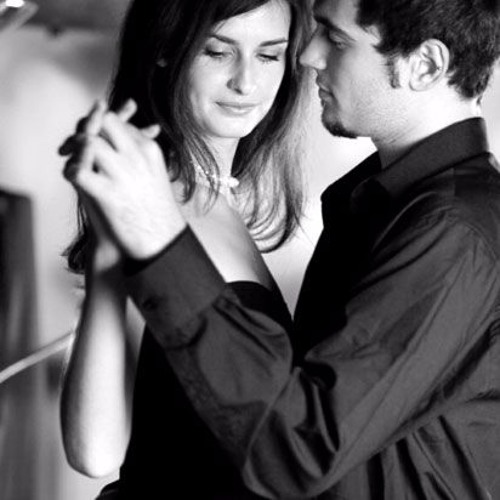
Let’s break down how to slow dance step by step, and discover how to add your own style to the slow dance.
Jump to Section
- Is Slow Dancing Easy?
- How to Slow Dance Step by Step
- How to Slow Dance at a Wedding
- How to Slow Dance at Prom or Homecoming
- How to Slow Dance by Yourself
Is Slow Dancing Easy?
You don’t need any special skills to learn how to slow dance, but it helps to have some guidance to achieve the posture and attitude that will bring style to your slow dance moves. The slow dance is an easy dance to learn by following a few simple steps.
How Do You Slow Dance Without Being Awkward?
Because slow dance is most commonly performed with another person, learning how to slow dance for beginners can be intimidating. Beginners might wonder where to put their hands, how fast to sway or even how to ask someone to join them for a dance.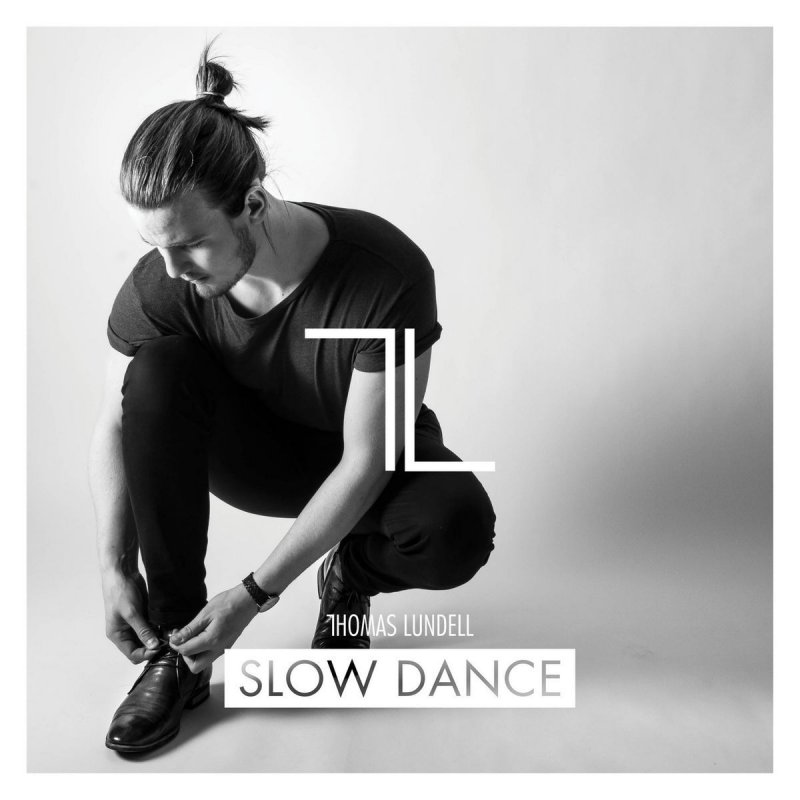
Although slow dancing is simpler than other types of dance, practicing the slow dance and learning a few basic moves will build your confidence on the dance floor.
Try Slow Dancing Lessons
So, how do you slow dance well? To master the basic moves, learn more advanced steps or get feedback from a top-rated instructor, try joining an in-person dance class. With a quick search, you can find dance classes in Colorado Springs, dance classes in San Diego, dance classes in NYC and dance classes near you.
If you prefer to learn slow dancing at home or are nervous about dancing in front of a group, try participating in online dance classes!
via CanvaHow to Slow Dance Step by Step
1. Ask Someone to Dance
First, ask your intended partner if they would like to dance. If they accept, escort them to the dance floor and choose a place with a little space to move. Once in position, establish a leader and follower.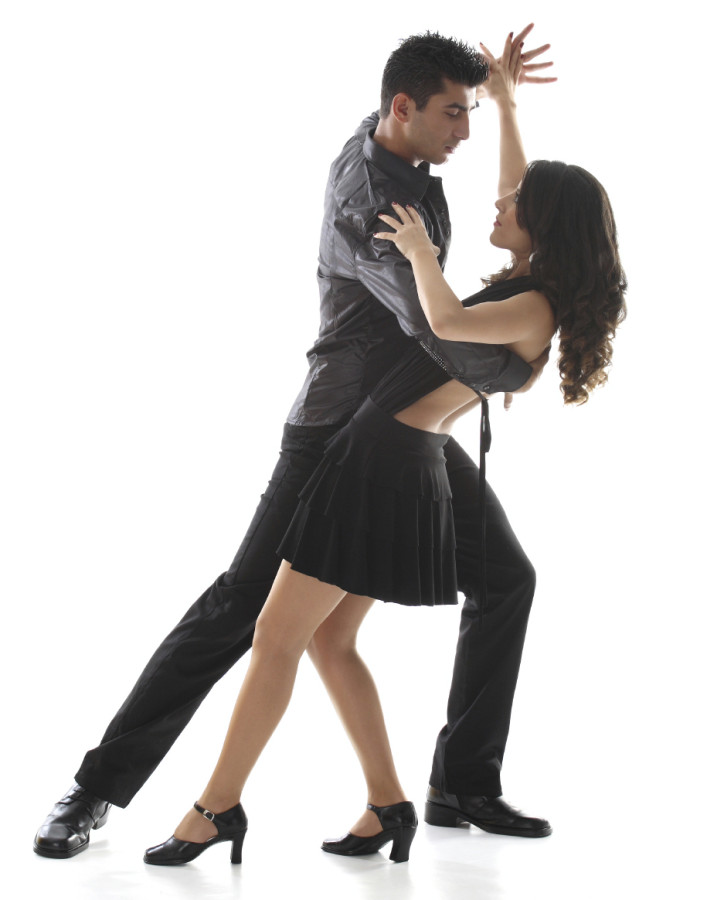
2. Get Into Position
The leader places their right hand behind their partner’s left shoulder with their right elbow up and pointed out to the right side. The follower wraps their left arm over their partner’s lifted arm with their hand placed near their partner’s shoulder or bicep.
Clasp each others’ free hand, raised to approximately eye level of the shorter partner. This is important to keep in mind if you're curious how to slow dance with a tall guy or tall woman.
Now that you are in position, listen to the music to find the beat and begin to sway.
3. Begin Basic Slow Dance Steps
As you get more comfortable, you might try a basic step. The leader steps to the left, then brings their feet together, then to the left and together again. Repeat to the right.
Tip: To avoid stepping on your partner’s toes, place your partner slightly to the side so your feet interlock rather than overlap. Remember to keep your knees relaxed and take small, comfortable steps.
Remember to keep your knees relaxed and take small, comfortable steps.
4. Add Slow Dance Turns or Dips
Once you have confidence in these basic steps, spice up your dance by performing the basic step in a circle or by adding a turn or dip!
via CanvaHow to Slow Dance at a Wedding
Couples slow dancing at the reception, whether they are the newlyweds or the wedding guests, is a signature moment of many wedding celebrations. By following the same simple steps as listed above, you can practice slow dancing at a wedding and impress friends and family at this special event with your smooth slow dancing style.
Inviting everyone on to the dance floor for a slow dance, from your grandparents to your bridesmaid and her date, can create wonderful moments for the photographer to capture while offering some surprising benefits to the couples slow dancing on the floor.
via CanvaHow to Slow Dance at Prom or Homecoming
Slow dancing at a school dance such as prom or homecoming can be one of the most nerve-wracking moments of adolescence. Feeling confident in your ability to slow dance may calm some of those fears and help you enjoy the night with friends or even build up the courage to ask your crush to dance!
Feeling confident in your ability to slow dance may calm some of those fears and help you enjoy the night with friends or even build up the courage to ask your crush to dance!
Modern Slow Dance Steps
If the traditional steps of slow dancing feel too formal or out-dated, you might consider the hug and sway style of couple slow dancing when learning how to slow dance with your girlfriend or crush.
In this extended hug position, the leader places their hands on their partner’s hips while the follower places their arms on the leader’s shoulders or loosely around the neck. Leave enough space between you so that you both feel comfortable. In this position, you can simply sway back and forth by shifting your weight from side to side with the rhythm of the music.
Tip: Once you are on the dance floor, have a few topics to talk about if you don’t want to dance in silence. Try to ask open-ended questions to spark the conversation and learn more about your partner.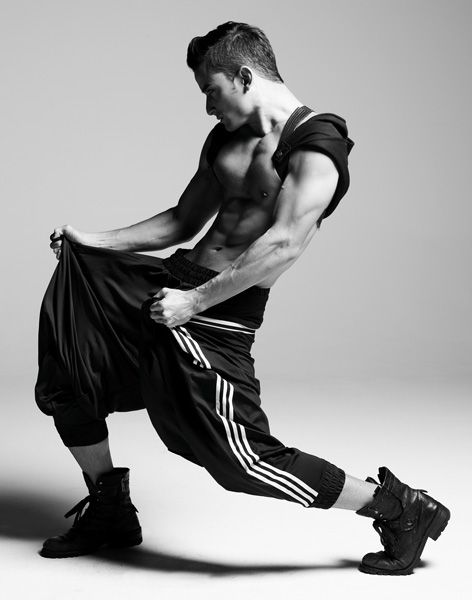
How to Slow Dance by Yourself
Can you slow dance by yourself? If a slow song comes on and you find yourself without a partner, you don’t have to leave the dance floor. You can use some of the same moves as partnered dancers when learning to slow dance by yourself.
A gentle sway shifting your weight from side to side is an easy solo move for slow dances. You can also try the basic step to add a little more movement to your solo slow dance.
Relax your arms and shoulders, allowing them to move gently with the rhythm of the music. As you build confidence in your slow dancing, you can begin to add your own style to the movement whether you are dancing by yourself or with a partner.
via CanvaSlow dancing with style will come easily once you learn the basic steps and practice them often. Although, as with any new skill, mastering the slow dance may take a little time and patience.
From weddings or prom to any occasion where there is music and social dancing, knowing how to slow dance with confidence will make the event less stressful and more fun!
For even more creative ideas and inspiration, check out other experiences happening on Classpop!
Related Articles
A Beginner's Guide to Bachata DancingA Beginner's Guide to Cumbia Dancing
How to Belly Dance (With Confidence!)
How to Line Dance Like a Pro
How to Salsa Dance Beginner’s Guide
How to Swing Dance: A Beginner’s Guide
90,000 12 life hacks, to quickly learn how to dance from Mamita Dance
Dances
Author: Pavel Gather
Psychologist, Lecturer Salsa and Tango
Dances
Author: Pavel Pavel
Psychologist, Lecturer Salsa
on At the start, you always want to get a quick result.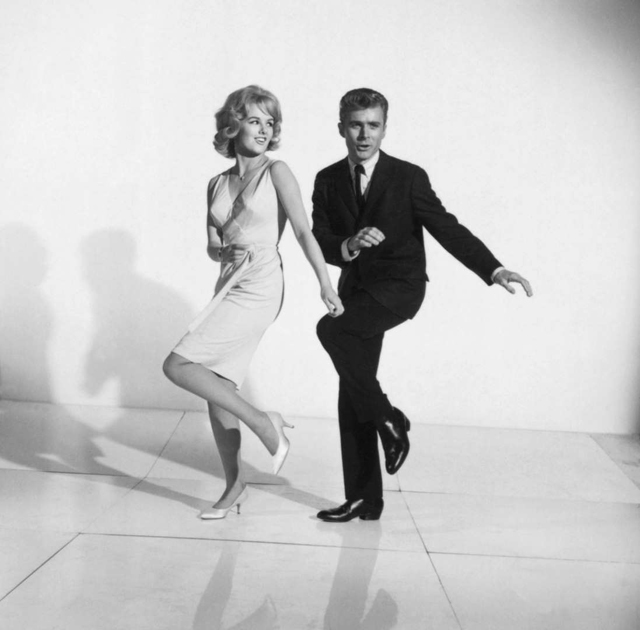 When it doesn't happen, the hypothesis arises that everything takes time. After a conditionally acceptable time, humility comes to mastering pair dances, which, perhaps, is not given, and I will just do what I learned somehow.
When it doesn't happen, the hypothesis arises that everything takes time. After a conditionally acceptable time, humility comes to mastering pair dances, which, perhaps, is not given, and I will just do what I learned somehow.
This is the most common story of those who believe that the mere act of attending a pair dance class is enough to learn how to dance.
Absolutely not. If you want to really dance well, you have to make an effort outside of the dance class. A good teacher will definitely be needed, but the initiative should be on your side.
1. Listen to music
The most common and accessible advice that is given already in the first lessons. And it definitely works. Music creates a certain atmosphere of the dance and intuitively you want to move to it. It doesn't matter where you listen to music - in the car, on headphones while walking or doing household chores.
An addition that will help you dance better is your active participation in the music.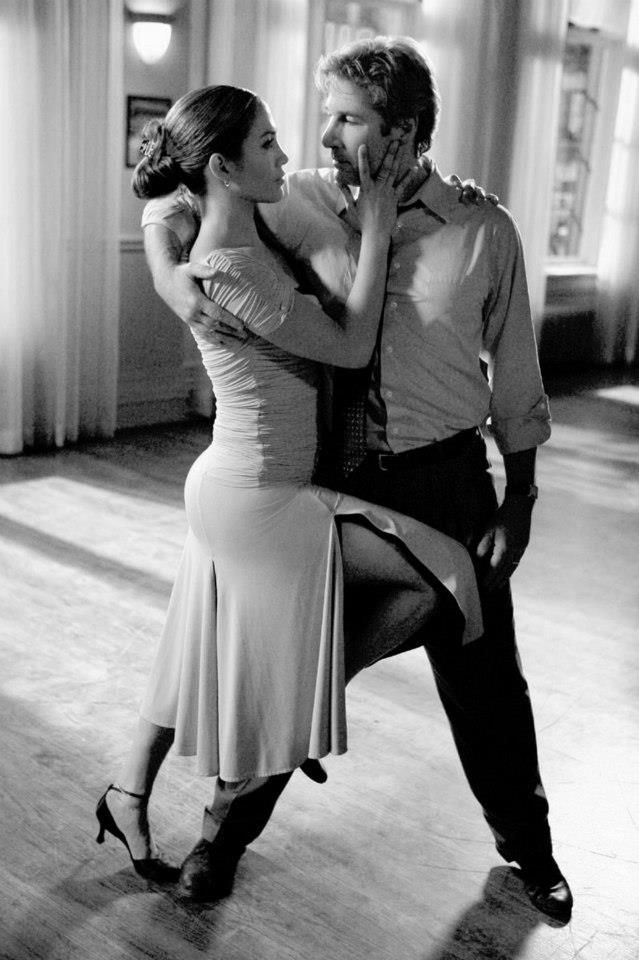 Sing along, dance or simply beat musical accents with any free parts of the body. In the subway, for example, it is enough to tap out bright moments with your fingers, in the car to sing along with sounds, and at home you can jump for pleasure.
Sing along, dance or simply beat musical accents with any free parts of the body. In the subway, for example, it is enough to tap out bright moments with your fingers, in the car to sing along with sounds, and at home you can jump for pleasure.
2. Watch videos of good dancers
It's complicated, but also obvious. It’s more difficult, because without recommendations from more experienced dancers, unfortunately, it’s not so easy to find a good quality video on the net (I mean not the resolution quality, but the content itself).
Meaningful video viewing is about building an understanding of HOW dancers make a particular impression on a partner or viewer. Technology is at the heart of everything. Understanding how the pros do it is a big step forward.
It is important to distinguish between a show and a disco dance, a choreographed performance from an improvisation, a stylized dance from an authentic one, etc. Ask for recommendations and dance instructors will always upload a couple of videos of worthy landmarks.
Tango Z. Showreel.
Online modern tango courses
Tango nuevo is the most advanced version of tango. We can quickly learn to dance from zero to a steep level.
| View details |
3. Dance in salsatecas/milongas/discotheques
A very delicate moment when it is worth coming to the first party. From a technical point of view, most students in 1-3 months have a sufficient set of figures and techniques to come and dance calmly. Psychologically, the same moment can be stretched out for an indefinite time. After all, it is imperative to “not lose face”, “learn more figures” and be sure what to do in case “there is an unfamiliar movement”.
In fact, the partygoers don't really care (except for a small layer of non-professional teachers who want to help inexperienced dancers by treating them as customers in the future). It is important to come and try dancing after a month of classes.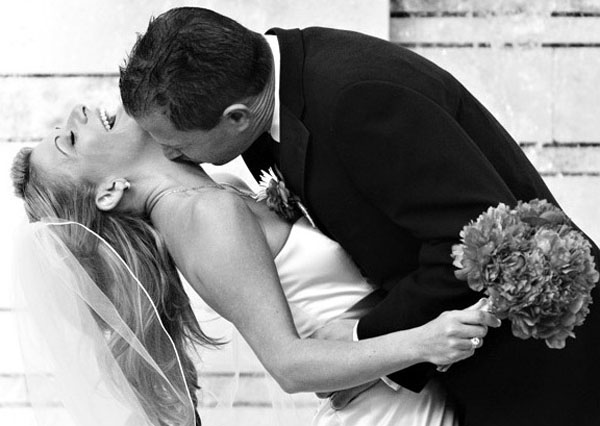 You can only with friends or guys from your group. This will be enough to feel the adrenaline and inspiration from the dance.
You can only with friends or guys from your group. This will be enough to feel the adrenaline and inspiration from the dance.
4. Dance with partners or partners not of your level
The conventional wisdom that you need to practice in groups of your level does not withstand the test of experience. Perhaps now your eyes widen in surprise, and you want to meaningfully read the phrase again. Yes, you saw everything correctly: when you dance with a partner of your level, you don’t grow anywhere.
It's important to understand that not only does it work one way and you have to dance with cooler dancers, but it works even more effectively the other way. It is no coincidence that teaching pair dances dramatically raises the level of the teacher himself. You have an endless stream of very beginner dancers.
How it works. A more experienced partner needs to be "stretched". It's easy and obvious. With beginners, you need to take more initiative on yourself, see the general pattern of the dance more widely, turn on and insure more, try to be an example and be more careful. The quality of interaction begins to grow significantly. And wonderful partners too.
The quality of interaction begins to grow significantly. And wonderful partners too.
Dancing with partners of your level doesn't make you grow. Dance with beginners and more advanced dancers
Dominican Bachata Women's Style Online Course
Want to learn how to hypnotize those around you with the most appetizing part of your body? On the course we will tell you all the secrets.
| Interesting |
5. Learn to dance for a partner and for a partner
Turks and Argentines are one of the best partners in the world. In Russia, partners are highly valued. Why? The answer is simple. In Argentina and Turkey, it is not questionable for men to ask another man to lead in one piece or another and give feedback on the quality of the lead. For them, it will be a great shame to hear moralizing from a partner, or even more so to be known in the community as an insecure partner.
In Russia, due to the constant, often far-fetched, opinion that there are more women in pair dances, partners calmly get up and study their partner's part.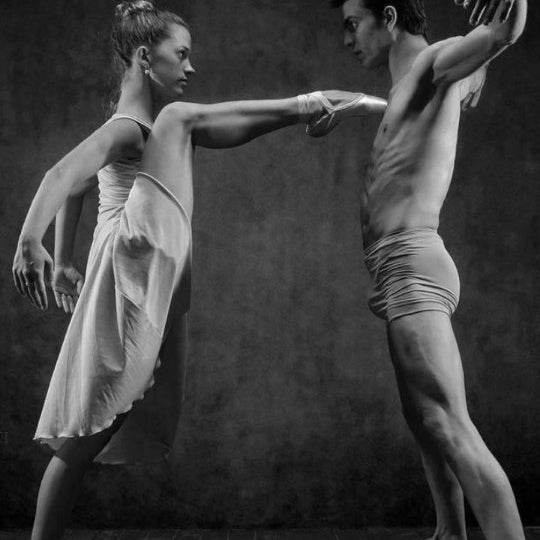 Such partners then grow into very cool dancers and teachers. In no case do this at parties, only in class. Here we are talking only about the learning strategy. At parties, be yourself.
Such partners then grow into very cool dancers and teachers. In no case do this at parties, only in class. Here we are talking only about the learning strategy. At parties, be yourself.
6. Do not memorize the links
Always try to look deeper and understand the through principle and idea of movement. Understanding what and how is done will make it possible to independently generate any sequences and chips.
Human memory is limited and there will always be a moment when something will escape and your repertoire will be limited by the size of RAM.
In Argentine tango, for example, there are seven levels of movement construction that, when mastered, will allow you to make millions of combinations. And how many dance sequences can you really remember? In rueda, more than 150 figures dance in a rare circle. It's hard to keep more in mind.
7. Develop your body
Many years of experience in teaching couple dance shows that as soon as everyone pairs up in a class, any progress in individual style ends. But it is the individual style that distinguishes everyone at the disco: partners change, and style is always with you.
But it is the individual style that distinguishes everyone at the disco: partners change, and style is always with you.
The body as the main instrument of dance must be very plastic, responsive and emotional. Surprisingly, not all pair dance schools have a general physical warm-up. It is vital to tune the body and understand how it works.
You can always train extra and concentrate more on the basic steps, as their true value is as body work. The sequence of steps is, in fact, the simplest thing that can be in pair dancing. The quality of individual performance determines the craftsmanship.
8. Try on the images of inspiring dancers
A psychological life hack for those who have already mastered the steps, but still feel that there is not enough brightness and drive. Most are terribly afraid of being someone else's "clone". Here the action is the same as under the influence of hypnosis - the more you resist, the more you plunge into an altered state of consciousness.
With a high degree of probability, you are already dancing like someone else's "clone". A meaningful fitting of someone else's image is that you mentally take the image of the one who inspires you (inspiration is critical in this case) and "put on" yourself. Then you start dancing and trying to feel in general how it is to be able, for example, to be the best partner or the sexiest partner in a disco. This is much more difficult than it seems. But it works extremely efficiently.
9. Dance to offbeat music
Habitual rhythms keep you tight. Tango salon or speedy timba leave little room for experimentation and fantasy. Pattern dancing is always noticeable and is reserved for beginners.
The truly new is born outside of the usual. Look for places to experiment. If there is no place, organize self-training. The main thing is not to get carried away, because music determines the style. We bring something new to pair dances, rather than trying to change them.
Search, improvise, don’t be afraid to go beyond, develop in different directions, be inspired by music atypical for the style
10. Try your hand at basic dance directions
dances exist according to their own non-choreographic laws.
This is the deepest delusion, which has turned into a ceiling for the qualitative development of partner dances. After all, all professional dancers, for example, in salsa or bachata, build their ideas on the basic choreographic principles.
Do not think that choreography is only applicable on stage. Any meaningful movement of the body can be choreographic. In general, try classical or modern choreography. Basically, hip-hop can work too.
11. Look for battle sensations
Pair dances return us to an active position of manifestation of our body.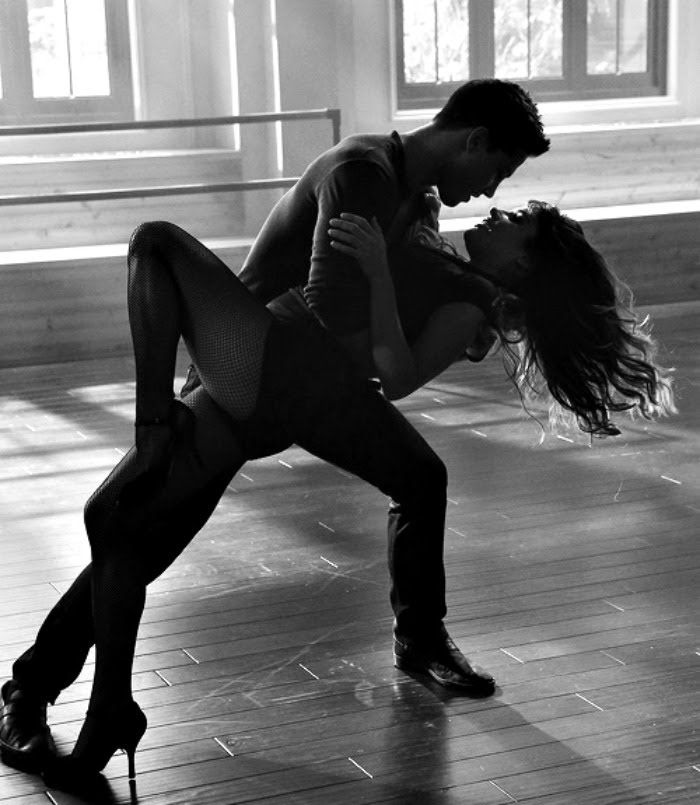 As in the days of our ancient ancestors, we impress the members of the opposite sex by how dexterous, hardy, sexy, etc. we are. Modern laws of the jungle in the entourage of big cities.
As in the days of our ancient ancestors, we impress the members of the opposite sex by how dexterous, hardy, sexy, etc. we are. Modern laws of the jungle in the entourage of big cities.
If you look around the dance floor, it becomes clear that the majority are clearly herbivores (not in the sense of vegetarians, but in relation to those around them). I am sure that predators are always more interesting in terms of the attractiveness of the image - try to find a counterbalance among herbivores, for example, a cat woman or a lion man.
The conversation is about an internal position, not about aggressiveness. Lability and lack of control are inherent in adolescents, and not in adult self-sufficient people.
Accordingly, even a training or friendly battle gives, on the one hand, practical skills - to make a bright sequence of movements, bring an idea to a climax, show a spectacular feature, on the other hand, develops the psychological basis of the dance - self-confidence, resistance to extraneous attention, self-control and self-control in complex elements.
12. Communicate with professionals
The environment shapes the internal position. Basically, real passionaries of the dance community are ready to openly talk, discuss and support the development of dance in every possible way. Universal principles and the ideas they articulate have a much longer and more practical perspective than meets the eye.
Accept that, for example, behind the words "listen to your partner" is not only a beautiful metaphor, but also a practical skill to literally listen to your partner. At the same time, always treat every thought, even the most respected teacher, as a private opinion.
Your skill will lie in finding the scope of the idea even in conflicting opinions. Most often, the contradiction is speculative and the truth lies in the angle of perception or situationality.
Your dancing growth will stop sooner or later. This can happen at the level of three basic steps or years of experience in teaching and show performances. Regardless of your level, the suggested 12 life hacks can get you off the ground and greatly accelerate your dance growth. There is no way here without your motivation and activity. Take your dance development into your own hands. 9Ol000 Dangerous sexuality
Regardless of your level, the suggested 12 life hacks can get you off the ground and greatly accelerate your dance growth. There is no way here without your motivation and activity. Take your dance development into your own hands. 9Ol000 Dangerous sexuality
Salsa: destroyers of stereotypes
Couple dancing as a source of strength.
Self-destruction of the couple dance community
The Salsa series as a mirror of the community
Mamita Fridays: salsa, bachata
Destroying the myths about leading pair dances
Does dancing make us better?
The seven deadly sins of teachers
Why we will never dance bachata like the Dominicans
Why tango?
Dispute over musicality
Selection of dances according to alcohol preferences
Where to find inspiration for dancing?
Terrible tango nuevo
Distribution of roles in a salsa party
Argentinean tango through the eyes of a salsa dancer
Is there a predisposition to dancing?
Which is more effective: individual or group lessons?
Sexual overtones in couple dances
How to learn to dance in clubs for a guy
Contents
fashion came out synchronized movements of couples in a waltz or mazurka. For at least a century now, men have had to guess what a profitable disco dance should be like. Unfortunately, even professional choreographers will not answer this question. But we will try to highlight the basic rules.
For at least a century now, men have had to guess what a profitable disco dance should be like. Unfortunately, even professional choreographers will not answer this question. But we will try to highlight the basic rules.
hop and R'n'B
Rules to follow
Relax
Let's tell you a secret: most guys on the dance floor don't look stupid because they haven't taken lessons in dance studios and can't tell tectonics from r'n'b , but because they do not catch the rhythm of the music and cannot relax. And if no one usually pays attention to the first, then the second immediately catches the eye of others.
Hence the first rule: listen to music and let your body dance freely.
Choose a style
If you are a frequent discotheque visitor, you should choose a certain dance direction in which you will move on the dance floor. Of course, this will depend on the music that the DJ will put on, but for ten years now hip-hop and electronic music have not left the clubs. Therefore, you can master the basic movements of either one or the other. The "electronics" elements are a bit simpler, so it might be worth starting with them. Video tutorials to help you!
Therefore, you can master the basic movements of either one or the other. The "electronics" elements are a bit simpler, so it might be worth starting with them. Video tutorials to help you!
Sign up for a trial class
Try to vary your movements
If after watching the videos you still can't feel comfortable on the dance floor, you should consider signing up for a dance studio. An experienced teacher, a company of like-minded people and regular classes will quickly do their job, and you will finally be able to relax and stop having complexes while dancing. Plus, to the envy of your peers, you will no longer dance like a “newbie”.
Remember that everything is for fun
If you do somersaults on the court for ten minutes with a tense face, and then return to the table sweaty, your friends are unlikely to appreciate it. Understand that dancing is not a competition, but a completely cultural form of recreation. As they say, relax and have fun!
Let it all flow
Let go of your body and emotions, surrender to the music and move without paying attention to others.